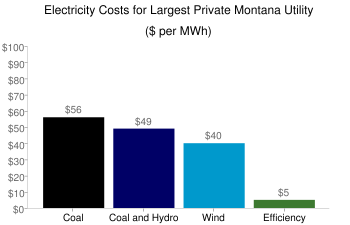 Most states had to cut spending to close budget gaps in the 2009 fiscal year, and many face additional shortfalls in 2010. These cuts often mean shorter library hours and larger class sizes, but tax credits for renewable energy frequently emerge unscathed.
Most states had to cut spending to close budget gaps in the 2009 fiscal year, and many face additional shortfalls in 2010. These cuts often mean shorter library hours and larger class sizes, but tax credits for renewable energy frequently emerge unscathed.
The cuts in government services tend to fall hardest on the middle and working class, while the energy tax incentives tend to benefit wealthier members of the community. The good news is that it doesn’t have to be this way. Wind turbines and solar panels don’t have to compete with schools and hospitals.
The fix is before Congress and many state governments, and it’s called a renewable energy feed-in tariff. It’s a “plug and play” policy for renewable energy, guaranteeing a grid connection to anyone with a wind or solar project, a long-term contract with your utility, and a price for electricity generation sufficient to make a small profit. It means that many more can be clean energy producers rather than just consumers, spreading the economic benefits of renewable energy over the widest possible area. A good feed-in tariff policy says, “It’s not just for rich folks anymore.”
Here’s how it works. A homeowner buys a solar power system and has it installed on her roof. The local utility connects it to the grid and signs a 20-year contract to buy her solar electricity. The price it provides will give her a small return on investment (say, 6 percent). If the homeowner’s electricity adds any cost to the system, the additional cost (amounting to pennies per month) is spread over all the utility’s ratepayers.
A feed-in tariff helped Germany get 16 percent of its electricity from wind and solar in 2010, with half its renewable energy systems locally owned, bringing economic benefits to every corner of the country. It did so at a lower price than other policy options, because having a guaranteed price lowered borrowing costs for renewable energy developers. And Germany didn’t have to argue for renewable energy tax incentives at the expense of health care, transportation or education.
A well-designed feed-in tariff can replace the maze of government rebates, grants and tax credits with the simple requirement that electric utilities pay producers for the full cost and value of renewable electricity. This strategy results in at least three significant benefits:
The policy can create a more democratic, decentralized electricity system because it removes most of the barriers to local energy generation. This dispersion of renewable electricity production will help maximize the use of the existing electrical grid (transmission and distribution). Locally owned projects return three times the economic benefits to communities that absentee-owned projects do.
The feed-in tariff also means transforming individuals from energy consumers to producers. Unlike traditional renewable energy incentives that target large-scale developments, the feed-in tariff lets anyone become a renewable energy producer. And when people make the shift from consumption to production, their energy use becomes a conscious effort to find equilibrium, rather than simply writing a check for the electric bill.
Finally, the feed-in tariff takes renewable energy incentives off the government balance sheet so that legislatures don’t have to choose between children and clean energy. It may even increase government revenues as hundreds of new renewable energy producers pay taxes on their electricity earnings. Furthermore, since these producers won’t be corporations with legal departments dedicated to reducing their tax payments, there will be more revenue per project.
State and federal budget problems recur regularly, but there’s no reason these shortfalls should pit energy independence and economic development against schools, libraries, or health care — especially when there’s a better solution for promoting renewable energy development.
This is an opinion piece I wrote this spring, published on Minnesota Public Radio’s website.
… Read More




 Problem is, the truth is the exact opposite. And these two people now regulate the electricity industry in Montana. Kudos to citizen Ben Brouwer of
Problem is, the truth is the exact opposite. And these two people now regulate the electricity industry in Montana. Kudos to citizen Ben Brouwer of 
 Most states had to cut spending to close budget gaps in the 2009 fiscal year, and many face additional shortfalls in 2010. These cuts often mean shorter library hours and larger class sizes, but tax credits for renewable energy frequently emerge unscathed.
Most states had to cut spending to close budget gaps in the 2009 fiscal year, and many face additional shortfalls in 2010. These cuts often mean shorter library hours and larger class sizes, but tax credits for renewable energy frequently emerge unscathed.